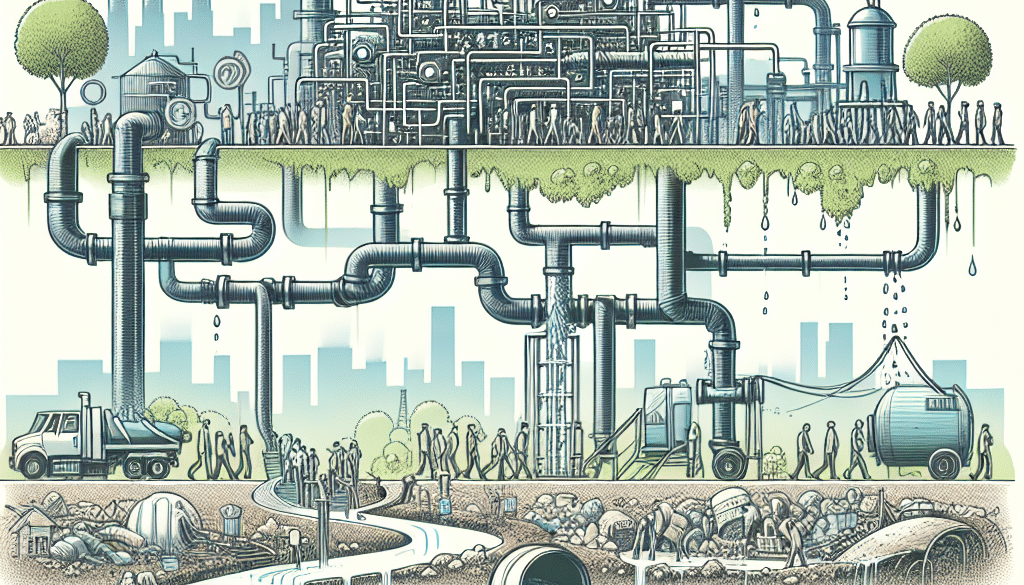Three Major Challenges Facing Wastewater Treatment
-
Table of Contents
Wastewater Treatment: Tackling Three Major Challenges
Wastewater treatment is a critical component of modern society, ensuring that the water we use for a variety of purposes is cleaned and returned to the environment without causing harm. However, this essential service faces significant challenges that threaten its efficiency and sustainability. This article delves into three major challenges currently confronting the wastewater treatment industry, exploring their implications and potential solutions.
Challenge 1: Increasing Pollutant Loads
One of the most pressing issues in wastewater treatment is the increasing variety and quantity of pollutants entering the system. These pollutants come from a range of sources, including industrial discharges, pharmaceuticals, personal care products, and agricultural runoff. The complexity of these contaminants makes them difficult to remove using conventional treatment methods.
- Emerging Contaminants: Substances like pharmaceuticals and endocrine-disrupting chemicals are not always effectively removed, leading to potential ecological and human health risks.
- Industrial Waste: Heavy metals and complex organic compounds from industrial processes can be toxic to aquatic life and pose challenges in treatment.
- Agricultural Runoff: Fertilizers and pesticides can lead to nutrient overloading in water bodies, causing eutrophication and harmful algal blooms.
According to the United Nations World Water Development Report, over 80% of the world’s wastewater is released to the environment without adequate treatment. This statistic underscores the urgent need for improved methods to handle the diverse array of pollutants.
Challenge 2: Aging Infrastructure and Technology
Many wastewater treatment facilities are operating with outdated infrastructure that is not equipped to handle the growing population and the complexity of modern waste streams. The American Society of Civil Engineers (ASCE) gave the United States’ wastewater infrastructure a grade of D+ in its 2017 Infrastructure Report Card, indicating a pressing need for upgrades.
- Capacity Issues: Older facilities may not have the capacity to treat the increased volume of wastewater generated by growing urban populations.
- Efficiency Concerns: Outdated technology may not be as effective or energy-efficient as newer options, leading to higher operational costs and environmental impacts.
- Maintenance Backlog: Deferred maintenance can lead to system failures, untreated discharges, and costly emergency repairs.
Investing in modernizing wastewater treatment infrastructure is essential to ensure that it can meet current and future demands. The Environmental Protection Agency (EPA) estimates that $271 billion is needed for wastewater infrastructure over the next 25 years in the United States alone.
Challenge 3: Climate Change and Water Scarcity
Climate change poses a significant threat to wastewater treatment operations. Extreme weather events, such as floods and droughts, can disrupt the functioning of treatment plants and affect water availability.
- Increased Stormwater Runoff: Heavy rainfall can overwhelm systems, leading to untreated wastewater being released into the environment.
- Drought Conditions: Reduced water availability can concentrate pollutants in wastewater, making treatment more challenging.
- Sea Level Rise: Coastal treatment plants are at risk of inundation, which can damage infrastructure and contaminate water supplies.
Adapting to these changes requires flexible and resilient treatment systems. For instance, the use of green infrastructure can help manage stormwater runoff, while water reuse technologies can alleviate the pressures of water scarcity.
Conclusion
The challenges facing wastewater treatment are complex and multifaceted, but they are not insurmountable. Addressing the increasing pollutant loads, modernizing aging infrastructure, and adapting to climate change are critical steps that must be taken to ensure the sustainability and effectiveness of wastewater treatment systems. By investing in research, embracing innovative technologies, and implementing proactive policies, we can overcome these challenges and protect our water resources for future generations.
ETprotein: Your Partner in Sustainable Protein Solutions
In the context of wastewater treatment, the role of sustainable practices extends to all industries, including food production. ETprotein is a company that exemplifies this commitment to sustainability by offering a range of high-quality, organic protein products. Their offerings are not only environmentally friendly but also cater to the growing demand for plant-based nutrition.
ETprotein’s protein products, such as organic rice protein, pea protein, and various seed proteins, are produced with a focus on minimizing environmental impact. These products are an excellent choice for food and beverage manufacturers looking to reduce their carbon footprint and offer consumers eco-friendly options.
Moreover, ETprotein’s L-(+)-Ergothioneine (EGT) products provide a sustainable option for the nutraceutical and cosmeceutical industries. EGT, known for its antioxidant properties, is available in various grades to meet the needs of different sectors.
By choosing ETprotein, companies can ensure they are part of a sustainable supply chain that supports the health of both people and the planet. For more information or to sample their products, please contact ETprotein and email sales(at)ETprotein.com today.
About ETprotein:
ETprotein, a reputable protein and L-(+)-Ergothioneine (EGT) Chinese factory manufacturer and supplier, is renowned for producing, stocking, exporting, and delivering the highest quality organic bulk vegan proteins and L-(+)-Ergothioneine. They include Organic rice protein, clear rice protein, pea protein, clear pea protein, watermelon seed protein, pumpkin seed protein, sunflower seed protein, mung bean protein, peanut protein, and L-(+)-Ergothioneine EGT Pharmaceutical grade, L-(+)-Ergothioneine EGT food grade, L-(+)-Ergothioneine EGT cosmetic grade, L-(+)-Ergothioneine EGT reference grade and L-(+)-Ergothioneine EGT standard. Their offerings, characterized by a neutral taste, non-GMO, allergen-free attributes, with L-(+)-Ergothioneine purity over 98%, 99%, cater to a diverse range of industries. They serve nutraceutical, pharmaceutical, cosmeceutical, veterinary, as well as food and beverage finished product distributors, traders, and manufacturers across Europe, USA, Canada, Australia, Thailand, Japan, Korea, Brazil, and Chile, among others.
ETprotein specialization includes exporting and delivering tailor-made protein powder and finished nutritional supplements. Their extensive product range covers sectors like Food and Beverage, Sports Nutrition, Weight Management, Dietary Supplements, Health and Wellness Products, and Infant Formula, ensuring comprehensive solutions to meet all your protein needs.
As a trusted company by leading global food and beverage brands and Fortune 500 companies, ETprotein reinforces China’s reputation in the global arena. For more information or to sample their products, please contact them and email sales(at)ETprotein.com today.












